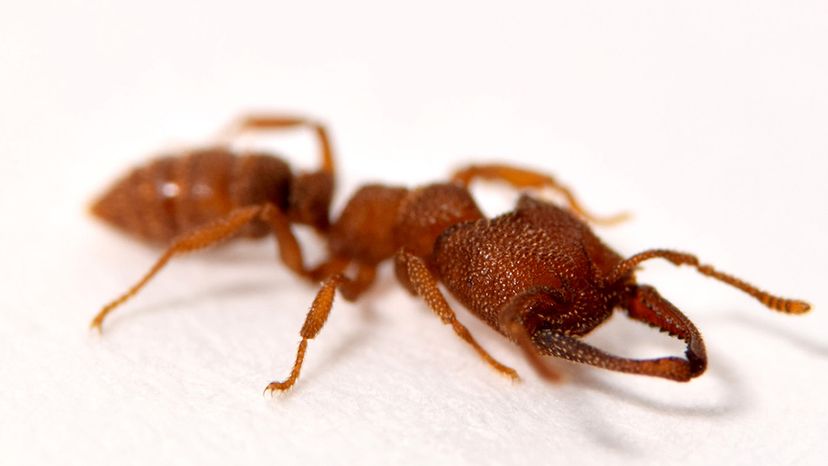
Move over, Ant-Man: This ant has real superpowers. Yep. It's fast. Like really fast. Think 5,000 times faster than the blink of an eye. Think 1,000 times faster than you can snap your finger. Think, if you're into darn near abstract numbers, something that goes from 0 to 200 mph (321 kph) in 0.000015 of a second. That's faster than a Tesla if you're wondering.
And that makes it the fastest known movement of any animal on Earth. Yep, an ant.
Advertisement
A new study in the journal Royal Society Open Science identifies a type of Dracula ant — so called because it feeds on the "blood" of its young — as the proud owner of a pair of jaws that snap shut so quickly that it took a camera shooting at 480,000 frames a second to finally capture it. The ant is Mystrium camillae, and it's found mainly in tropical forests in Asia and Australia.
These ants, according to the study's authors, use their lightning-quick jaws to both prey on things like insects and spiders in the leaf litter and logs of forest floors, and to defend themselves. Unlike some other ants, though, the jaw structure of Mystrium is not that of a typical hinge. It's not like a human jaw. Mystrium doesn't open and then clamp down around poor, unsuspecting, slovenly arthropods. Think more of that snap of a finger, or a flick on the ear.
The authors explain:
"The ants use this motion to smack other arthropods, likely stunning them, smashing them against a tunnel wall or pushing them away," one of the study's authors, Andrew Suarez, said in a statement. "The prey is then transported back to the nest, where it is fed to the ants' larvae."
The study goes deep into the mechanics of the ant's mandibles, describing the flat sides of the jaws that enable them to slip past each other. The authors used X-ray techniques to get three-dimensional views of the anatomy of the jaw, too, noting that the differences in jaw shape between biting ants and these snapping ants were minor. The evolutionary changes from biting with the jaw to using it as a coiled spring, the authors suggest, were relatively small.
Mystrium is a rare and strange animal. "These are crazy cryptic ants that we don't come across that much," study author Adrian Smith, head of the Evolutionary Biology Research Lab at the North Carolina Museum of Natural Sciences, said in a press statement. And in the end, the Dracula ant may not hold this speed record for long.
They've already begun working on learning about snapping termites and how fast they are. "We often see a scaling of animal speed with body size. Smaller animals tend to be faster than larger animals," Fred Larabee of the Smithsonian National Museum of Natural History, another of the study's authors, said. "It would not surprise me that some of these termites that are much smaller than Mystrium are much faster."
Advertisement